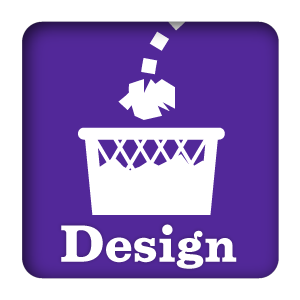The world has surely pressured Apple enough to produce a cheap iPhone, so it’s about time, right? I mean, hundreds of pundits and columnists can’t be wrong!
The reasons to produce a cheap iPhone have been covered elsewhere, but to simplify the explanation as much as possible, there are tons of customers in many countries (China) which are not willing or able to buy phones on contract. To expand, Apple needs a iPhone that can be sold at an affordable price without contract subsidies.
Sounds simple enough. Plastic case, lo-res screen, 6-hour battery. Done.
Finally, a short article
But not so fast.
Plastic cases? If cheap plastic cases could solve the cost issue, then the current aluminum case would have to be costing, what, twenty bucks? You save just a handful of pennies going to a plastic case. That is not going to get you to a cheap iPhone.
Okay, so a smaller battery and lo-res screen will do the trick. Just go cheap on the parts.
Here’s the problem with that idea. A cheap iPhone is going to be sold worldwide, and because it is, indeed, cheaper, it will be the new sales champ of the iPhone line. Already, the two year old iPhone 4S is the second best selling smartphone, and a cheap iPhone would do just as well, and probably much better. It will, like the iPod mini and iPad mini before it, start to out-sell the more expensive version, and become the most popular product they sell. The unofficial flagship of Apple. You can’t make your most popular product a piece of crap.
In other words, Apple needs to make the cheap iPhone share the same superior experience the current iPhone has. They can’t cut corners on the experience, by making a shorter-life phone with a screen years behind the times. The phone they must produce has to match or exceed the current iPhone in terms of specs and in terms of user look and feel.
So, no cheap iPhone, then?
The iPod begat the iPod mini and the iPad begat the iPad mini. The iPod mini was a smaller-capacity drive in a colorful, slightly smaller case. The iPad mini was a smaller size with a lower-res screen.
If we are looking at an iPhone mini as the progeny of the iPhone, and following Apple’s history, the two features that might be sacrificed are screen resolution and storage capacity.
The issue of screen resolution is an interesting question. If Apple wants to maintain screen resolution compatibility with existing iOS software, then there are three options. iPhone 1-3 classic resolutions, iPhone 4 retina resolution, and iPhone 5 tall retina resolution. The difficulty is that both retina resolutions are expensive, and the classic resolution is no longer acceptable to the average buyer.
In terms of memory, the storage capacity of an iPhone mini could be minimized, but an iPhone is sold in varying storage capacities, anyway. Would an 8GB iPhone save enough cost to bring the price down enough? Maybe, but it could also compromise the usability of the phone.
A phone with a classic-res screen, plastic case and 8GB. What we called the iPhone 3GS. Forget that. Apple is not going to re-make a four year old phone.
So if Apple isn’t going to go backwards in screen resolution, and be able to save money by cutting flash memory or make it a cheap case, what can they do?
Doing the iPhone Math
But what if we turned this on it’s head? What if we went the other way and called this the iPhone plus, as the rumors say? Why? What if it’s called the called the plus because it’s not smaller, but bigger?
The price of a larger display would be, in fact, cheaper. The larger battery that can go in a larger sized iPhone can be cheaper. Even the flash memory should be cheaper at the larger size. All the sudden, it starts to make sense. A cheaper iPhone is a larger iPhone, not a smaller one. You can use a retina iPhone pixel count on a larger scale screen, get good battery life, keep the storage up and even attract the big-screen phone customer.
So there’s the way Apple differentiates the product lines. A small, sleek iPhone versus a big, less expensive iPhone. So forget the iPhone mini, it’s going to be an iPhone plus.










